Ubiquitination-mediated upregulation of glycolytic enzyme MCT4 in promoting astrocyte reactivity during neuroinflammation
- PMID: 40307809
- PMCID: PMC12042614
- DOI: 10.1186/s12974-025-03453-z
Ubiquitination-mediated upregulation of glycolytic enzyme MCT4 in promoting astrocyte reactivity during neuroinflammation
Abstract
One of the histopathological hallmarks of neuroinflammatory diseases such as multiple sclerosis (MS) is the emergence of astrocyte reactivity. Accumulating evidence suggests that excessive glycolysis may lead to astrocyte reactivity and contribute to neuroinflammatory responses. However, the intricate mechanisms underlying astrocyte metabolic reprogramming towards glycolysis remain largely unknown. Here, we conducted in vitro experiments using primary astrocytes and in vivo studies in an experimental autoimmune encephalomyelitis (EAE) mouse model of multiple sclerosis (MS). We observed increased astrocytic expression of MCT4, a key glycolytic regulator, in EAE mice. MCT4 enhanced astrocyte reactivity through promoting glycolysis and proliferation, mediated primarily by activation of the NF-κB and c-Myc signaling pathways. Notably, we report a novel regulatory mechanism in which the E3 ubiquitin ligase TRIM7 regulates MCT4 levels via ubiquitination. In mice, blockade of astrocyte MCT4 expression by intracerebroventricular injection of lentivirus alleviated disease severity of EAE mice. The results suggest that targeting glycolysis, specifically through the inhibition of MCT4 expression, might be effective in reducing astrocyte reactivity, neuroinflammation and demyelination occurring in MS and relating neuroinflammatory diseases.
Keywords: Astrocyte; Experimental autoimmune encephalomyelitis; Glycolysis; Proliferation; Ubiquitination.
© 2025. The Author(s).
Conflict of interest statement
Declarations. Ethical approval: The study was conducted in accordance with the Declaration of Helsinki, and approved by the Institutional Review Board of Shaanxi Normal university (Permit Number: 2024 − 179). Consent for publication: Not applicable. Competing interests: The authors declare no competing interests.
Figures
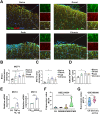
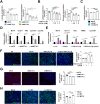
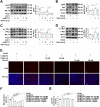
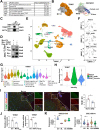
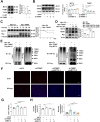
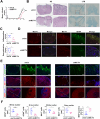

Similar articles
-
Upregulated expression of ubiquitin ligase TRIM21 promotes PKM2 nuclear translocation and astrocyte activation in experimental autoimmune encephalomyelitis.Elife. 2024 Sep 12;13:RP98181. doi: 10.7554/eLife.98181. Elife. 2024. PMID: 39264698 Free PMC article.
-
Oxygen tension controls the expression of the monocarboxylate transporter MCT4 in cultured mouse cortical astrocytes via a hypoxia-inducible factor-1α-mediated transcriptional regulation.Glia. 2014 Mar;62(3):477-90. doi: 10.1002/glia.22618. Epub 2013 Dec 21. Glia. 2014. PMID: 24375723
-
The monocarboxylate transporter 4 is required for glycolytic reprogramming and inflammatory response in macrophages.J Biol Chem. 2015 Jan 2;290(1):46-55. doi: 10.1074/jbc.M114.603589. Epub 2014 Nov 18. J Biol Chem. 2015. PMID: 25406319 Free PMC article.
-
Astrocytic DLL4-NOTCH1 signaling pathway promotes neuroinflammation via the IL-6-STAT3 axis.J Neuroinflammation. 2024 Oct 10;21(1):258. doi: 10.1186/s12974-024-03246-w. J Neuroinflammation. 2024. PMID: 39390606 Free PMC article.
-
Ependymal cells undergo astrocyte-like reactivity in response to neuroinflammation.J Neurochem. 2024 Oct;168(10):3449-3466. doi: 10.1111/jnc.16120. Epub 2024 May 4. J Neurochem. 2024. PMID: 38702968
References
MeSH terms
Substances
Grants and funding
LinkOut - more resources
Full Text Sources

